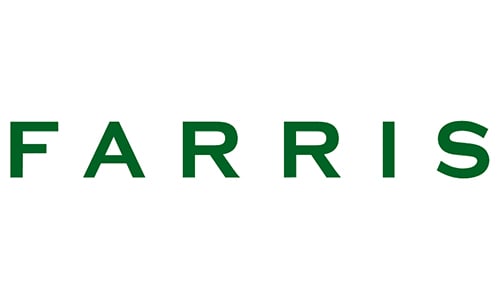The bare trust has often been a quieter member of the “trust family” which can be found skulking in the shadows of her more dynamic sisters, the testamentary and inter vivos trusts, or outshone by her dramatic brothers, the court-imposed constructive trusts. However, 2024 was a debutante year for the bare trust; with bare trust notoriety reaching fever pitch in April not in small part to Canada Revenue Agency’s (“CRA”) enhanced reporting rules which initially required all trusts, including bare trusts, to file an annual T3 trust return for the 2023 calendar year. At the beginning of 2024, professional advisors, clients and accountants were struggling to ascertain who had bare trusts, who needed to file for the trusts and just how many bare trust arrangements where quietly slinking around in planning circles. As the tax filing deadline approached, it became obvious that there are thousands perhaps millions of bare trusts in existence. Then, just days before the filing deadline, CRA announced that bare trusts would, after all, have an exemption for the 2023 year. This made the news – the bare trust achieved celebrity status. So what’s the “tea”?
What are bare trusts?
The bare trust, like a common trust, is an intentional arrangement where the “legal” and “beneficial” ownership of assets are separated. The key difference between the bare trust and a regular trust is that the structure for a bare trust is simple; the trustee is bare or “naked”. What this means is that a bare trustee holds the assets without any trustee duties or powers to deal with those assets. On demand of the beneficial owner, the bare trustee is compelled to (must) deal with the assets as the beneficiary directs. The CRA guidance describes this as an arrangement under which “a trustee can reasonably be considered to act as an agent for a beneficiary” and where the trustee can take no action without instructions from the beneficiary. Some of the 2024 confusions have arisen because bare trust arrangements are not always formal and sometimes have not been distilled to written agreements or declarations of trust. Where people have not received professional advice when arranging their affairs, bare trusts may exist but the trustee may be unaware that they are in effect a bare trustee.
What are some common planning uses of bare trusts?
Bare trusts commonly arise in estate planning as a technique to mitigate probate fees or facilitate easy transfer or management of assets without disturbing the beneficial ownership of those assets during the planning client’s lifetime. Examples of ‘run of the mill’ bare trust arrangements are plentiful. These include (i) a parent and adult child holding a joint bank account where the funds in the account belong beneficially to the parent and the child is merely a title nominee who is there to assist the parent (when directed) with operating the account; (ii) a parent is registered as legal owner with adult child of the child’s property so that the child could qualify for their mortgage but the parent has no beneficial ownership in the property; (iii) an adult child is on title to parent’s home for probate fee reasons or has a right of survivorship but no current ownership; (iv) title to real property is registered in the name of a nominee corporation and beneficially owned by another corporation or trust; (v) a grandparent holds a bank account “in trust” for a grandchild; and (vi) a partner of a partnership is the registered owner of a bank account on behalf of all partners in the relevant partnership. The options are almost endless.
Bare trusts and real property; how have the transparency changes changed the landscape?
In British Columbia, bare trusts have historically been a particularly popular probate mitigation planning tool to deal with real property and how it can transfer after death. That popularity arises, in no small part, from the way the Province’s Property Transfer Tax Act interplays with the Province’s Probate Fee Act. Property Transfer Tax (“PTT”) applies to taxable transfers of title of real property based on the fair market value at the time of the transfer and imposes fees based on 1% of the first $200,000, 2% of the value greater than $200,000 to $2,000,000, and 3% of the value greater than $2,000,000. While there are limited exemptions, including transfer of a principal residence (as defined in the PTT Act) to “related persons”, who are defined in the PTT Act to include “related individuals” who are further defined as spouses, children, grandchildren, greatgrandchildren, parents, grandparents, greatgrandparents, and their respective spouses, under the PTT Act, the definitions do not extend to a person being related to themselves. Several scenarios have been particularly popular in planning to deal with this collocation of legislation.
The first is the simple bare trust arrangement, described above, where the owner of the property avails themselves of the ability to separate the legal and beneficial title and transfers legal title to a related individual. Provided an exemption applies (i.e., principal residence) no PTT is payable upon that transfer to a related individual. Since the Province’s Law and Equity Act, s. 59, requires that contracts dealing in land, to be enforceable, are reduced to writing, in the best circumstances the documents supporting that arrangement usually include a declaration of bare trust or nominee status and perhaps, following on from the Supreme Court of Canada’s Pecore v. Pecore decision (2007 SCC 17), a deed gifting the right of survivorship to the bare trustee upon the death of the beneficial owner provided the nominee survives. Such gift of survivorship avoids the need for a probate fee on that property since the value of the property will not pass to the deceased beneficial owner’s estate. Nonetheless, since the deceased was the beneficial owner until death, the estate may claim the principal residence exemption over the property up to the death of the deceased owner in the deceased’s terminal return.
A second popular scenario is seen where the beneficial owner has engaged in inter vivos trust planning, such as an alter ego or joint partner trust, and has transferred the beneficial interests in their properties to the trustees of those express trusts. Bare legal titles are often retained by the settlor in these circumstances. Notionally, they retain the titles for themselves as bare trustee, or nominee title holder, for themselves as the trustee of the inter vivos trusts. Since an unregistered trust is permitted under the British Columbia legislation, on the death of the bare trustee, the bare legal titles will transmit to the personal representative named in the Will. The titles are noted in the grant application but do not attract probate fee. The transmission to the personal representative does not attract PTT. The original trust document will be filed by the personal representative at the time the trust interest is registered (per subsections 180(3) and (9) of the province’s Land Title Act.
A third popular use of bare trusts has been to have a British Columbia corporation be the legally registered title holder of the property, the bare trustee, for the underlying beneficial owners. The beneficial owners may be individuals who crave privacy, other corporations or express trusts who also seek privacy. The shares of the nominee corporation can be sold without a resulting change of ownership at the land title level which can be a flexible planning tool for beneficial owners or succession planning. Care must be taken when assisting with this type of planning since the PTT Act has additional PTT rates for residential property beneficially owned by foreign nationals, foreign corporations or trusts where the trustee is considered a taxable trustee because a foreign national or foreign entity is a beneficiary in residential property held in the trust. The anti-avoidance provisions of the PTT Act are potentially far reaching.
Additionally, the recent provincial transparency legislations, including the Land Owner Transparency Act, the Speculation and Vacancy Tax Act, the Vancouver Empty Homes tax program and the new Federal Underused Housing Tax Act, have added to the rising star of the bare trust. These statutes, which have been introduced to ensure that the beneficial ownership of real property in the province is transparent and not obscured from view, with penalties for non-compliance, have illuminated just how popular bare trust planning has become. As a result of the new reporting regimes, the bare trustee, though a mere agent, is now responsible for proper and timely transparency filings and updates, revealing themselves to the world. The annual trust return, if reintroduced be CRA for the 2024 calendar year and beyond, will provides yet another administrative exposé for the modest bare trustee.
What does the future look like for bare trusts?
Although there is more administrative reporting onus on bare trustees, bare trusts will remain a valid planning tool for many. They are traditionally cheaper and easier to establish than regular trusts. And though increased time and costs related to compliance and administration may put off those clients who crave simplicity in their overall plans above all else, for some, the benefits of utilizing bare trusts will still significantly outweigh the administrative bother. As professional advisors, best practices will remain to encourage planning clients to think critically about what bare trusts they may already have in place, particularly involving real estate, whether they have the beneficiary information ready if CRA reintroduces the trust filing obligation for bare trusts for the 2024 calendar year, whether they have appropriate documentation of the bare trust arrangement, and provide an analysis of whether establishing new bare trusts can be part of the solution for their specific planning needs regardless of the increased transparency and compliance obligations.
The future, though revealed, looks bare.
***
 Andrea Frisby, Partner, Farris LLP
Andrea Frisby, Partner, Farris LLP
Andrea Frisby is a Partner in the Private Wealth Group at Farris LLP. She focuses her practice on assisting clients with sophisticated estate and trust planning and administration. She provides succession planning advice and works with clients to craft trust documents, wills and testamentary instruments, powers of attorney and representation agreements which respond to their specific needs. Andrea also provides services to executors and trustees. Andrea is a frequent speaker for a wide variety of groups, including Pacific Business and Law Institute, Canadian Bar Association (Wills and Trusts), CLEBC and various professional groups. She has authored numerous papers in the areas of wills, estate, trusts and capacity issues. Andrea has completed the Society of Trusts and Estate Practitioners (STEP) Diploma and holds the Trust and Estate Planner (TEP) designation. She has been repeatedly recognized in The Best Lawyers of Canada in the areas of Trusts and Estates.





